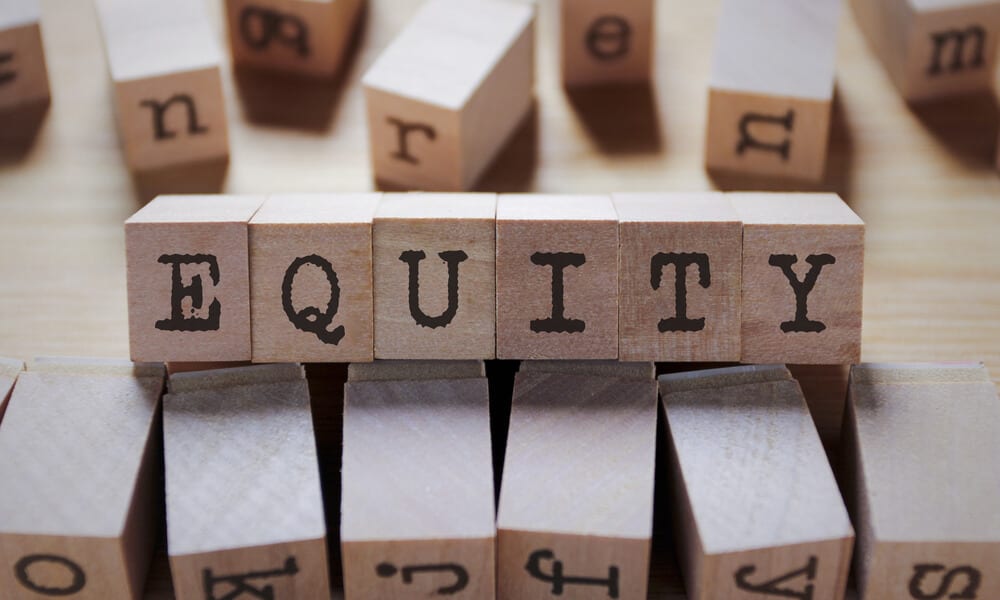Understanding Home Equity
Home > Real Estate >
Home equity is the difference between how much your home is worth and the outstanding balance of all liens on your property — how much you owe on your mortgage and/or other debts secured by your home. You acquired your initial home equity with the down payment you made when you bought the property.
From there, your home equity can increase in two ways: when you make payments on the principal portion of your mortgage, and when the value of your property increases in the marketplace. In other words, home equity is the amount of ownership you have built up in your property through mortgage payments and appreciation.
Here is an example: You buy a house for $250,000 with a down payment of $50,000 and a mortgage for the remaining $200,000. Your initial home equity is the same as your down payment, or $50,000.
Over the years, you pay down $30,000 of principal on your mortgage debt, so now you owe $170,000. During the same period, the fair market value of your house has increased to $300,000. Your home equity is now $130,000 — the difference between what your home is worth ($300,000) and what you owe on it ($170,000).
Home Equity Can Rise or Fall
Although many owners will see their home equity rise over the years, it also can diminish over time. During the recent recession, many houses lost value, with a concurrent loss of home equity for their owners. In some cases, those losses have wiped out the owner’s equity altogether.
Using the above example, let’s say your $250,000 home is now worth only $150,000 because of the housing meltdown. Even though you made a down payment of $50,000 and have paid $30,000 in mortgage principal, you still owe $170,000 on your original mortgage of $250,000.
Since the value of your home has been reduced by $100,000, you now owe $20,000 more than your home is worth. You have no equity.
How to Tap Your Home Equity
Home equity is not liquid — it cannot be sold as a commodity. However, banks and other institutions will lend money against it in several ways: the traditional home-equity loan, the home equity line of credit (HELOC), and a reverse mortgage.
Here is how each of these works:
- A home equity loan, sometimes known as a second mortgage, is a lump-sum loan that must be repaid over a fixed period of time. The amount you can borrow will depend on how much equity you have in the home. A lender will require you to make monthly payments, as with a regular mortgage.
- A HELOC allows a homeowner to borrow money using home equity as collateral. The amount of the credit line will be based upon a percentage of the owner’s home equity and can be borrowed as the owner needs it, instead of all at once. Interest paid on a home-equity loan and a HELOC is tax-deductible on federal tax returns.
- A reverse mortgage is available to homeowners ages 62 or older, under a federal program administered by the U.S. Department of Housing and Urban Development. Those eligible can access a portion of their home equity by borrowing against it. They can take the money in a lump sum, receive monthly payments, draw on it like a line of credit or use any combination of the three. The homeowners’ obligation to repay the loan is deferred until the homeowner dies or the home is sold.
One More Option
Another strategy to tap your home equity can be used when a homeowner trades down to a less expensive home.
If you have paid off your mortgage, your home equity is now the market value of your house. Again, using the previous example, let’s say that your $250,000 home is now worth $325,000 and you owe nothing on it. You sell it for $325,000 and buy a smaller home for $175,000. You end up with $150,000 in your pocket.
The Internal Revenue Service allows you to make a profit of $250,000 on your home sale if you’re single and up to $500,000 if you’re married. So your gain, which came from cashing-in your home equity, would be tax-free.
Sources:
- http://www.bankrate.com/finance/home-equity/what-home-equity-debt-is-1.aspx
- http://www.investorwords.com/5605/home_equity.html
- “Home Buying for Dummies” by Eric Tyson and Ray Brown. Published by Wiley Publishing, Inc., New York, NY. © 2001 Eric Tyson and Ray Brown. ISBN: 0-7645-5331-3.

